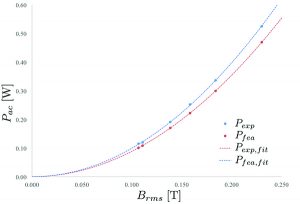Development of High-Frequency “Airgap” Windings for High Power Density Electrical Machines
Jonathan Martin with adviser K. Haran
This work is motivated by recent trends in electric machine design to obtain higher power densities in new generations of permanent magnet (PM) synchronous machines with a particular focus on the aerospace industry. The highest power density megawatt-class electrical machines to date have been developed on the order of 5.5 hp/lb using cryogenic high-temperature superconductor windings. In order to attain a 40 percent increase in power density in an air-cooled PM machine, a high magnetic pole count has to be complemented by high-frequency armature currents to achieve an overall power output of 1 MW. We explore the development of an appropriate armature winding design using Litz wire to minimize extensive ac losses due to skin- and proximity-effects without rendering the design impractical. An extensive analytical and numerical ac loss analysis will be employed to arrive at the best conductor topology by incorporating real manufacturing data from the vendor. Furthermore, we employ indirect balanced caliometry to empirically verify the numerical results as shown in Figure 7. Close agreement between experimental data and finite element results is observed with errors below 12 percent. Additionally, a polynomial trend line confirms the same relationship between ac losses and magnetic flux density as that predicted by the analytical model.
The second phase will focus extensively on the development of a manufacturing process to implement the derived design in various hardware prototypes. At present, several hardware trials have been completed and future work includes the refinement of the manufacturing process. This research is supported by NASA.
